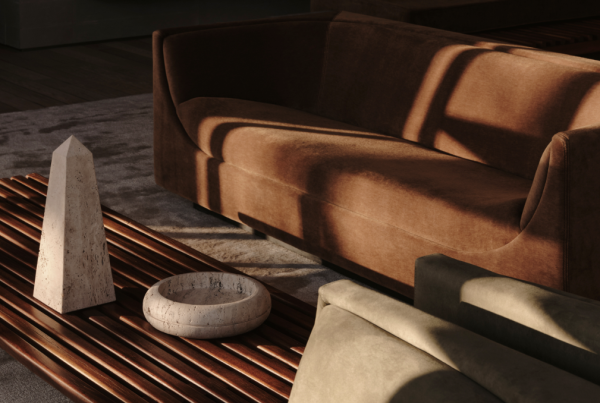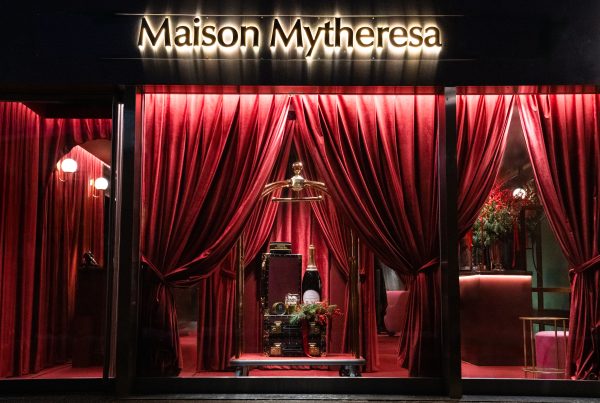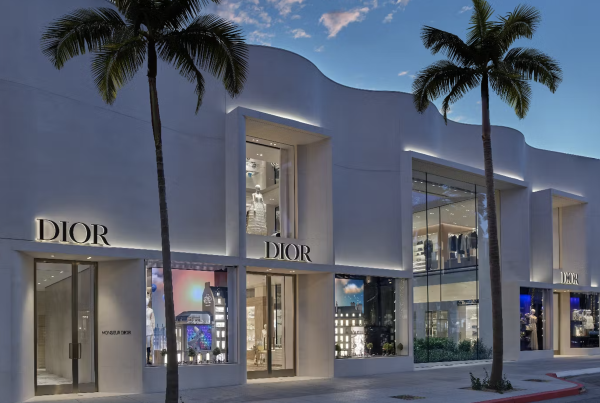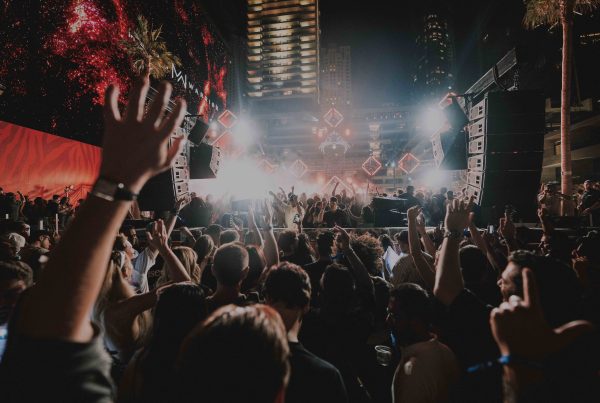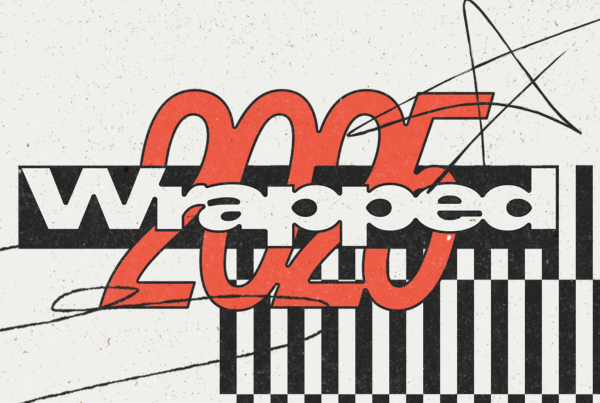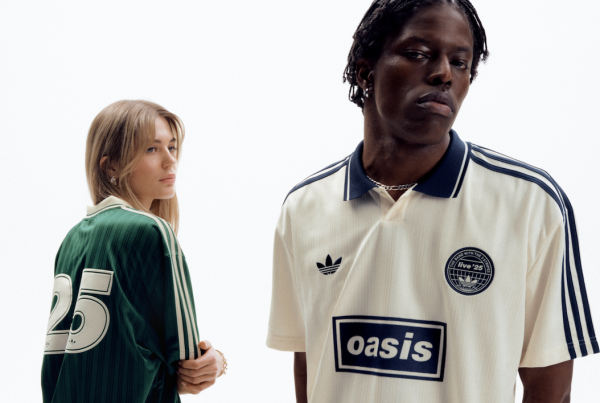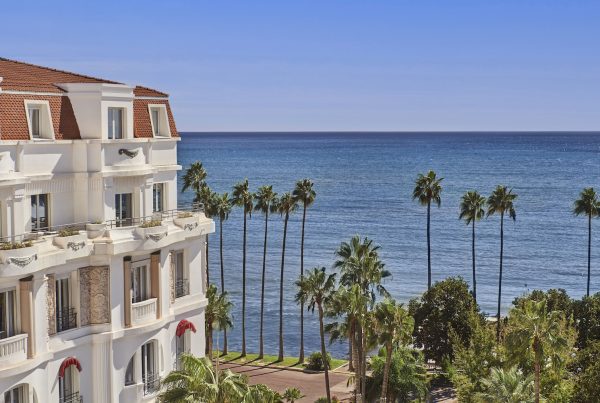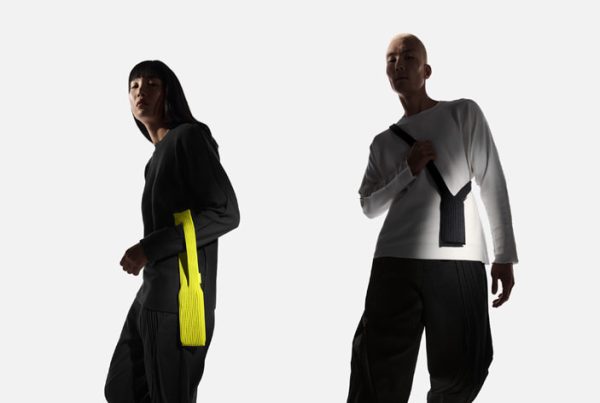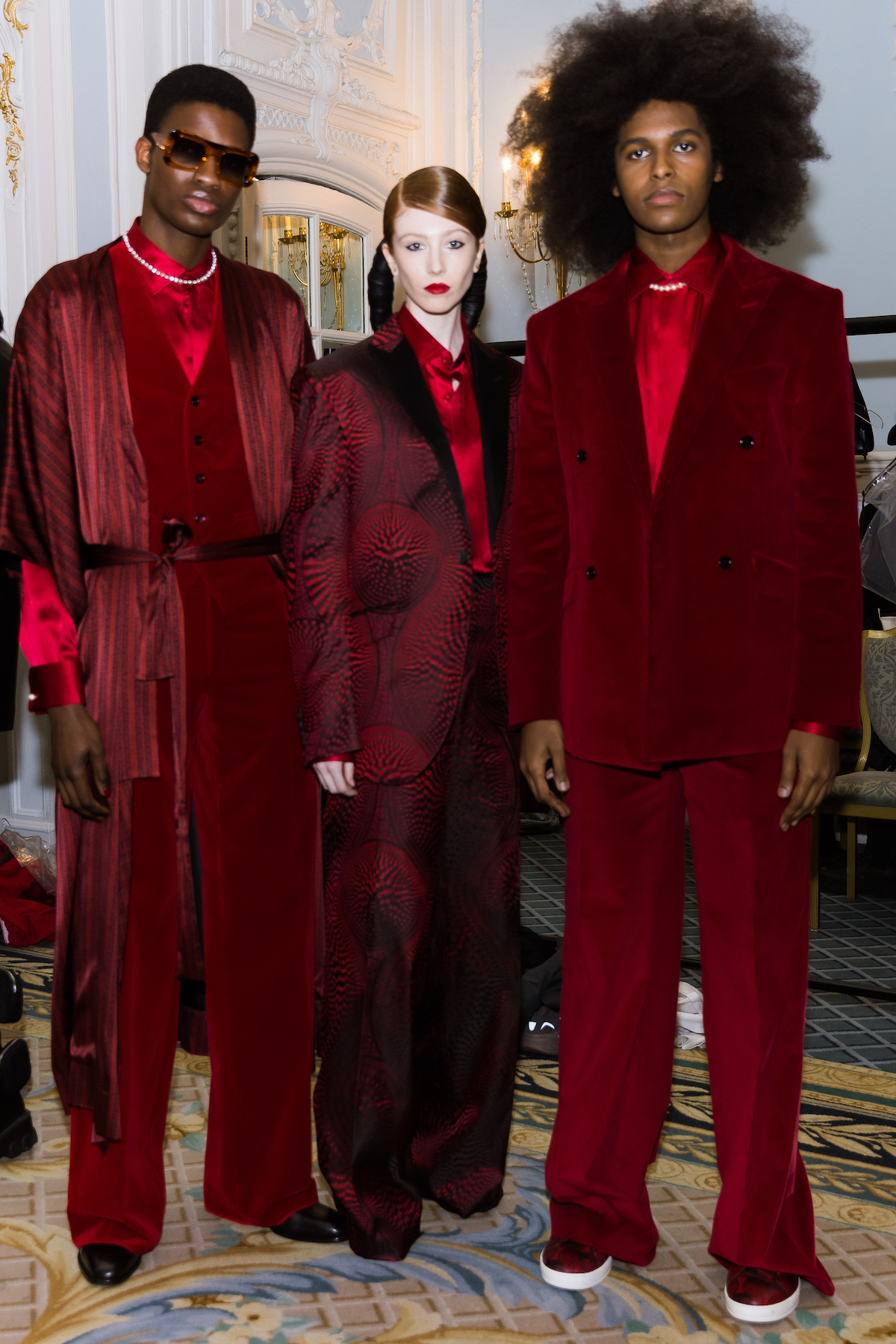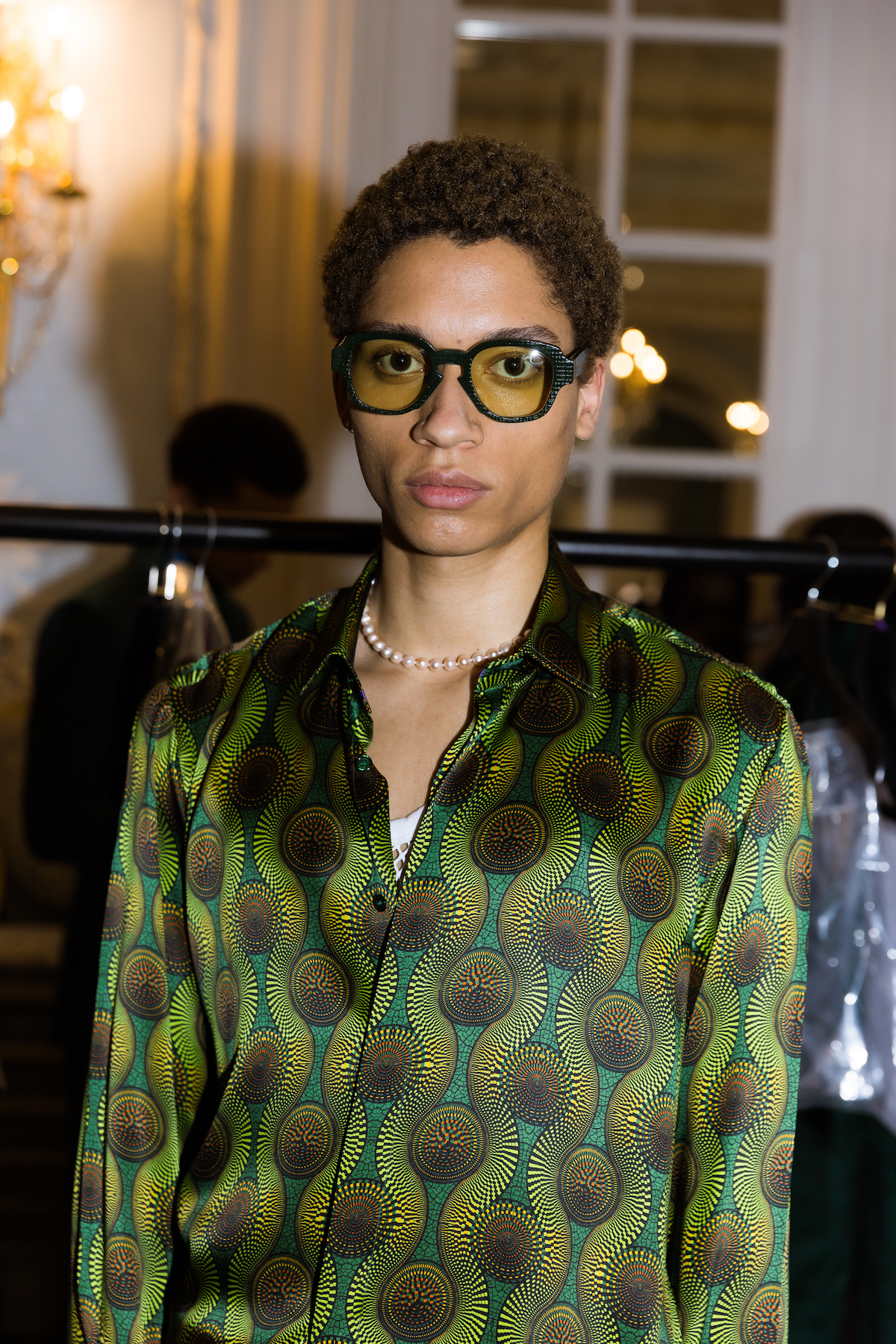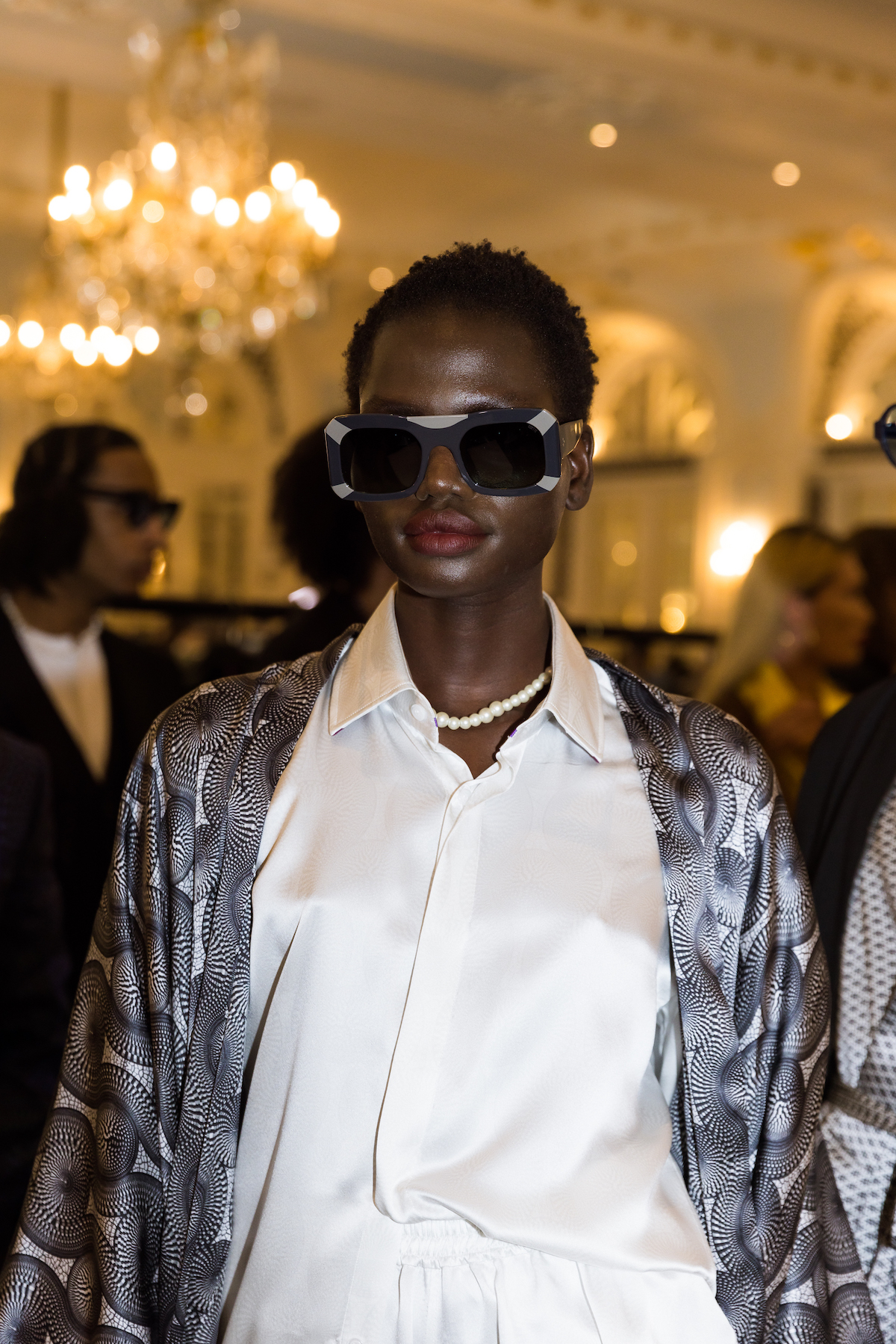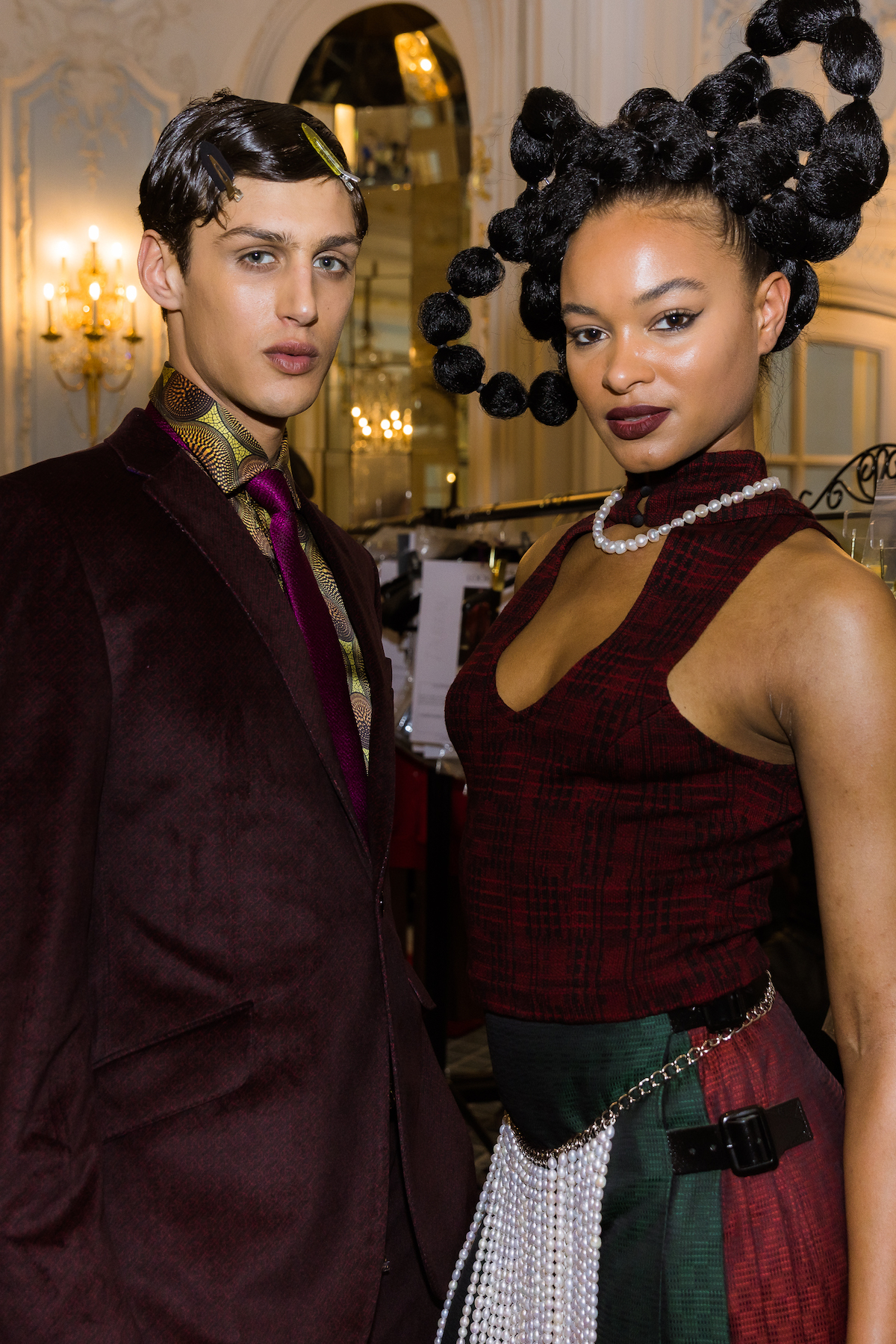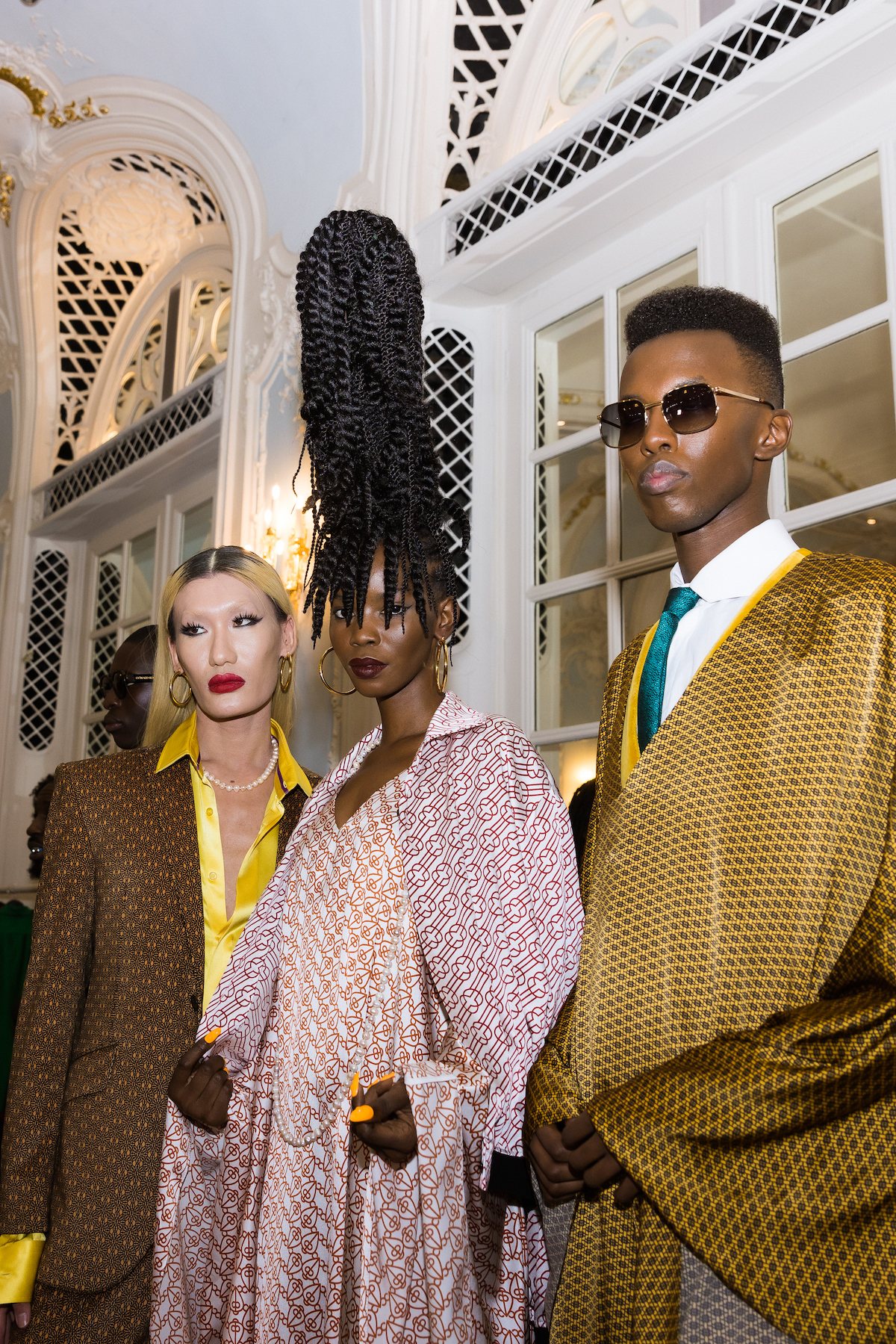The Legendary Prolific Coutierer
Ozwald Boateng. A Black British Ghanaian rooted designer who conquered through the pages of fashion during the early 90s, sold his first ever suit at 16-years-old and showcased collections through London, Paris, New York for years. Before joining the luxury houses, LVMH approached Ozwald to design for Dior prior becoming the Creative Director for Givenchy. Twelve years later, Ozwald returns to LFW, off schedule, reconnecting the brand to the new digital world of fashion but keeping meaningful connections which was unveiled at the latest fashion theatrical show at The Savoy Theatre in West End London. We at PAUSE had an in-depth conversation with Ozwald about the challenges he faced during his career, the journey that led him to become Creative Director for Givenchy and why he is not sticking to seasonal collections but sustaining made-to-order for all types of people.


Backstage Photography by Darrell Hunter
Interview by Johnson Gold
You’ve been ‘off the schedule’ for twelve years… Have you been designing for clients?
Absolutely! I’ve been doing my made to measure for many years, and collections.
The thing is, I’ve stopped doing seasonal collections because in truth I don’t think that system works anymore. I think we’re in a place where all over the world it’s summer and it’s winter… you could be going to some parts where it’s a bit cooler. We don’t live like that anymore, that seasonal structure. More importantly, it’s about consumption. The way the structure is set up, it’s forcing you to consume huge amounts. In truth, there needs to be a different relationship with the clothing and a different relationship with the purchase. I’m more about pre-order service now because I think that’s the only solution. I think for me economically it makes sense, but more importantly it means that I’m not having to produce as much to be able to sell to you.
It makes much more sense now because there are different body and gender types. We live in a society now where people prefer something made for them.
Exactly! And for me, all that you see here can be worn by women because what I’ve done is, in terms of my shapes and styling, I’m not thinking in that context. In truth, I’ve always put a lot of feminine sexuality into my men’s, because that’s just the nature of how I create. I like beautiful clothing and I want women to go “Wow! I love what you’re wearing.” I want all genders appreciating and enjoying. That’s not me making statements, that’s just the truth of my creations. What is interesting about the world today is that it’s almost moving into my sweet spot- I’ve been living there for a long time- so now I’m allowed to express.
Why weren’t you allowed to express before?
There was a structure, a tradition, that said you can’t. When I first started that’s how I made my name in Paris during the 90’s… I was combining this traditional world with this fashion world. I was fusing the two worlds together. But, to do it well I had to be really anterolateral about how I fused them together, so initially a lot of the buyers loved what I did but they didn’t know where to put me. Do they put me in the traditional floor? But you’re too fashion for that. But if I put you on the fashion floor, you’re too traditional… so they didn’t know where to put me. For years, I had all this demand but it couldn’t be serviced because they didn’t know where to put me.
Tell us something André Leon Talley said to you in the early days…
He said to me at the time, I said to him “I’m a tailor” … he said “No you’re not. You’re a couturier. It’s the way you use fabric and colour.” So, that’s how far back I go with André (Leon Talley). Unfortunately, he’s left us now, but what a powerful and prolific character. Extraordinary.
He’s like a father.
Yeah! He came to all of my early shows and was really a very big supporter. His passing was sad to me, definitely. Here, we have my tribal pattern and you can see that I’m wearing it right now- in the tweed- and I’ve translated it into evening wear.
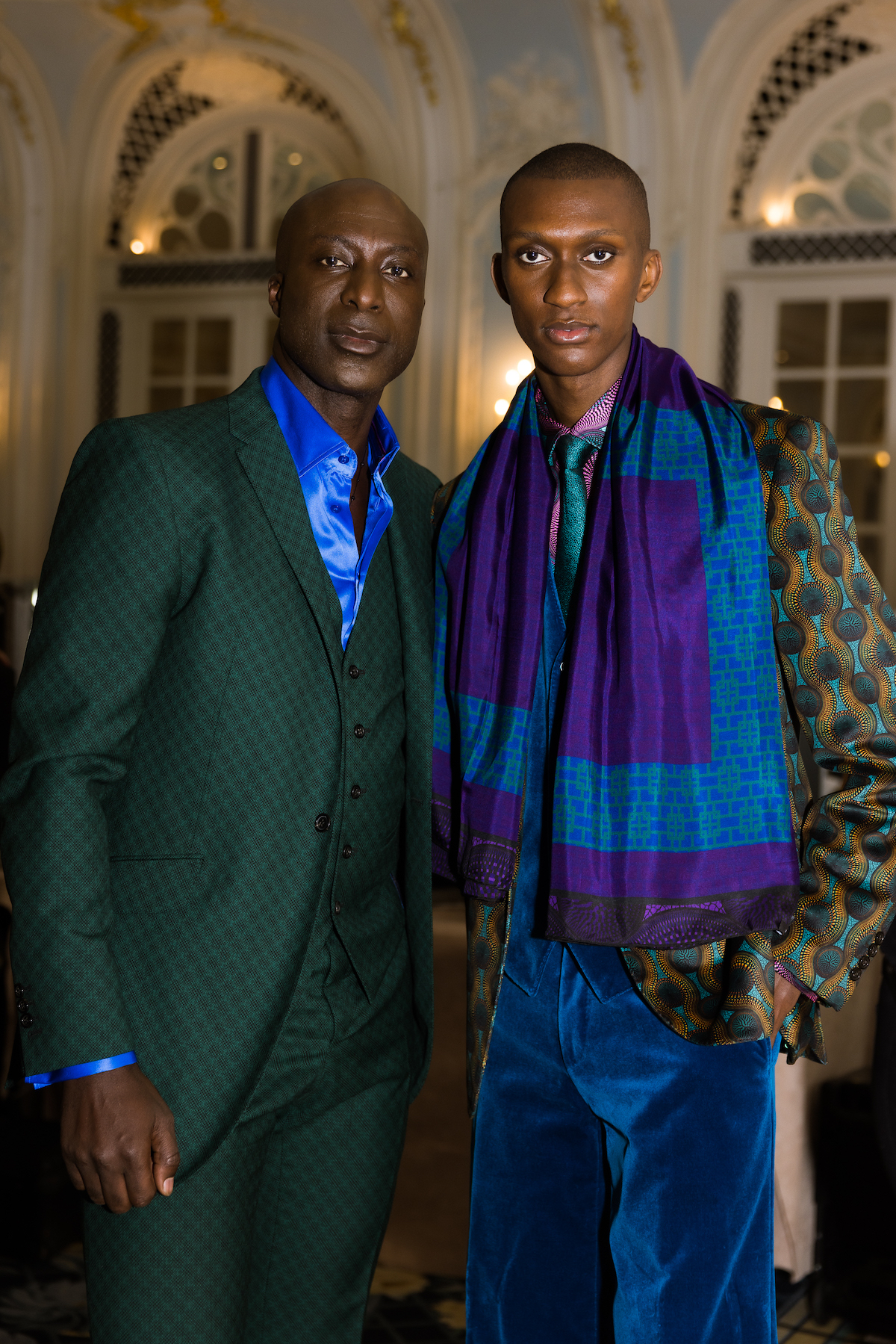
Tell us about the pieces you’ve created in this collection (walks through collection)
When you see the trousers, they’re wide leg. And you can mix the pieces together. Then you have the wide leg with this- the silk kimono- and the bomber jacket. And then you have this, suiting the kimono and three-piece.
I love the cut!
Yes! Sharpness. This is a wide leg trouser, again silk… kente again on the cashmere. Same again, wide leg, as you can see in black and white. You can see over there the kente shirt with Adinkra symbols. These are all Adinkra symbols. The spirituality is embedded… I’m a spiritual guy so don’t play with me! For me, the design is also about how you feel and how it touches you emotionally; that’s a very key thing for me. That’s the real nature of this for me. Then we have the corduroy over here, you have the wide leg…
I love the Ghanaian touch!
Yeah! My colour palette is very African because of its richness and depth… here there are Adinkra symbols again. This one is linen… silk… and then velvet. You wouldn’t even believe that is velvet, but it is. There’s a real regality in there, you know. A richness of culture. You can see a real elevation of an African aesthetic… it’s distinct in a sort of classic British tailoring way. It’s embedded and gives it that formality. It’s almost like wearing a suit of armour, but even more than that; it’s a blessing. You’ll feel it when you put the shirt on. You see you have the kente tank top underneath that.
It’s cut wide, so it has breathability. You’ve got the tank and then wide leg trousers that are loose. The jacket is the only structure, everything else is loose.
The silk over the top, and the wide leg again. Here, you have the red and then you have the kente in cashmere. You have your wide leg robe with the kente symbols… silk… boom. Rich. Basically, when you see it, they’re going to look like jewels. Like rare stones.

Did you ever get involved in London Collections: Men?
Yes. I did a show in 2010, which is the first time I showed. It was the first time they created a Men’s Day. I spoke to Dylan Jones and he said “Oh, I’m going to do a Men’s Day.” And I said “Do you know what? To celebrate that I’m going to do a fashion show on that day.” And I did, it was called ‘A Man’s Story’ and it was real elevated experience and it was beautiful. In fact, I asked a question about that story because I always like to tell stories in my collections, the reason of why you’re creating is important. So, for me, ‘A Man’s Story’ was really about asking ‘At what point do you become a man?’. In that time, it meant a lot to me because I was asking the question as I had a film made about my life, and the director decided to call it ‘A Man’s Story’. So, I thought, ‘What does that actually mean?’… right? Then it was about what point you become a man, was it 18? 21? 30? Or is it when you get married? Or is it when you have kids? What is it? I had dinner with five of my mates and two of my friends at the table, the evening afterwards, said that they became a man when they lost their father. And that hit me like a tonne of bricks because I did not realise that. So, I was like, wow. When I made my show, it was a tribute to my dad because I didn’t realise that that’s the point, right? I’ve now lost my dad. I lost my dad in December 2020, and it’s actually his birthday today… and my birthday’s on the 22nd, which is 22/2/2022… so I decided to have my fashion show on that date because on midnight I’ll roll into my birthday. When I did it on that Men’s Day, I was asking all of those questions and I celebrated my dad on that day because I brought him on the catwalk. And he was able to feel and experience what I felt and experienced when I do a show. He said to me afterwards that “If I go today, I’m good.” That was powerful. I get emotional with you now because when he passed, I was able… I’m terrible at social media, I’m the worst person on the planet, and my kids are constantly reminding me about it, but I did a post about my father. I pulled up pictures and I wrote a piece underneath and said at what point I became a man and the rest of it. It was probably the first time that I properly understood the power of social media. I was getting all these posts (comments), things that people were saying, and I was reading them and it was actually what I really needed in that moment. That’s the power of understanding communication. I’ve got some more to show you (walks to collection).
So, I’ve got some more pieces here… this is a silk bomber, which is really beautiful. And you’ve got the shorts that are cut high for women to wear. I did these jumpsuits with silk bombers.
These are unisex, right?
Yeah! I’m probably more thinking for women, but actually no. Men could wear this too. Actually, it would be killer on a guy. Now you’ve put this in my head! I might well do that… and here, we have the suiting. Then, we did the jumpsuit which is wide legged with an open back. It’s killer. It’s beautiful. I’ve got the right leg and the bomber over here, and then the fitted jumpsuit with the tribal print. It’s really, really sexy. Then with this one, I’ve done kente again which is sort of fitted against the dress but you can wear a kimono on top, and it’s sexy. It’s easy… it’s not complicated. It’s in the vibe. Also, I’ve done kilts as well.
You’ve injected Kente everywhere!
Oh yeah, of course! As an Ashanti boy, I had to put that stuff in there. It’s funny, I’ve got a really good relationship with Ashanti, so we’re always having those conversations about the culture, the roots, and everything else. So, now I’ve really injected it into it.


It’s just important, because you stand for that. You’re the first Black tailor to mark their business on the most iconic street in London, which is history. How did you start that?
I came to Saville Row in 1984 or 1985.
Did you come to just visit or is that when you got your store?
Visited. I got my store in 1993, it opened it 1994. I kind of made the decision when I was 18, which was 1985. I got the store here when I was 26/27. I started my business when I was 16, and I was selling wholesale at 18.
Tell me about the first time you sold your first suit. How did it feel? And who was it for?
When I first started, I sold pieces to individuals but I was really rough in my skillset. I had to develop that through college. My start position was that I was studying computer programming at college, and the coding in those days was basic… 0011, quite literally. We were typing that, spending one hour doing that. That’s where I started, and then I met this girl at college that was an artist and she inspired me. She was my girlfriend and she was doing a fashion show… she said “Look, I’m doing this show. Help me design the clothes.” I said, “You’re crazy I can’t do that”, and she said, “No you can, let me show you.” Somehow, I knew how to do that and afterwards people wanted to buy it. I was like “I’m 16, you want to buy this?”
At 16 years old?!
I’m thinking “What? Okay!”. I sold it, because those days we were pushing ourselves to make a buck… what happened is, who’s very famous now, was researching for TV show and he said “Why don’t you come to this show? You might meet some famous people and they might like your clothes.” So, then I went on that show.
What was the name of the TV show?
Can’t talk about that! (laughs). What happened is that I met a lot of famous people and I started dressing them, and when you’re 17 you think that’s the way it is. At 18, that’s when I got told about Saville Row but I already was selling a collection to a really famous store here in Covent Garden called Sprint. But, even before that, after I was selling to the stars, I thought that I should start selling to stores. I could always draw, I was always creative… my dad was a teacher, an academic… African style. So, art and creativity meant nothing. I designed a collection, I go to the most famous store in London at the time, which was Brown’s. I go to them and go “See these designs, I want to sell them.” I speak to the buyer and tell him that I wanted him to buy the collection, and he looks at me like I was a crazy man… but he didn’t because he couldn’t believe my confidence. He actually said that he’d buy the collection if you can tell me what the concept is, so I’m like “What do you mean, concept?”. He said, “When you work out what that means… come back.”
I went home and I wanted to sell and I was just saying “What is this guy talking about?”. I was racking my mind for days, and then I worked it out: he’s asking me why. Why are you doing it? What is your comment? There’s got to be a why. I go back and I said, “You know what… I want to take tradition and I want to modernise it.” That’s how the concept was birthed. I was forced to think about it, and then I went in and he said, “I can’t buy it.” But he taught me the most important lesson which is why I design what I design: I only design with purpose. There is no point in creating if you don’t know why you’re doing it.
100%, otherwise you get lost. Did you face any difficulties trying to get a place on Saville Row?
Of course. You have to remember because people may not know, but the brand went global during the 80’s and the early 90’s. There weren’t many fashion magazines, it was quite literally a handful. So, when you were in a magazine then it meant a huge amount. So, already at that point I was getting a lot of commotion and PR, because I was doing this quite unique proposition in the world of tailoring. Forget about Saville Row… Saville Row at that point was a dead horse; nobody was interested in it. I came in and I was the one who was promoting it in the fashion world. It was like, “Oh hey, this old traditional skill still means something here.”
Did you feel like you could stand out in Saville Row?
No, I didn’t do it for that. This is the thing, Suzy Menkes said to me “You made a mistake, because you were always more than a tailor. Everybody knew you were a designer. Why did you do that?”. The reason why it was important was because when I started, this street, tailoring, and Saville Row, represented British culture and so, if I could be here, I could impact and change perceptions. That’s what it was all about…but I couldn’t say that. I knew what I was doing, and I knew what it was doing for the culture. I had the designer flag… I was doing collections, I was doing fashion shows in Paris for fifteen to twenty years, and Milan, and New York. I did it all, but I was still communicating in tailoring to an extent where you could also influence other designers to think about tailoring in a different way, because I knew I was the champion of that. And as the champion of that, I got a lot of respect here. The messaging was much greater. It was much more than that because I can only talk about it now. Historically, I couldn’t have said what I’m saying to you now. I can say now why I did it. The thing is that when I started, change only came from within. I couldn’t come and kick the door down; that wasn’t a possibility. Your guys’ generation are in a different zone. You can shout out and say all that, and everyone has to hear… but it wasn’t like that for me. We were in the room, and we changed things very gradually so you didn’t feel it.
How did you keep going throughout the years?
It was tough. Challenges. Sometimes you think you’ve made a huge point of your creative, of your work, but always, always having to be… it was very difficult. It’s funny, like I said, Tinie Tempah took me to a fashion dinner maybe five years ago, which is funny… Tinie Tempah taking ME to a fashion dinner, right? He said “Ozwald, I need to take you to this”, and I said, “What do you mean?”, he’s like “No, you have to come.” I hadn’t been for years, and there’s a sensitive story relating to that but it’s almost too boring now to get into, so I had declined and I pulled back for a minute for a reason. I was kind of irritated somehow by all the work, and there was something that I wasn’t happy with in the system. So, I pulled back a bit.
What was that?
We’ll come to that another time. But what happened is that Tinie said “You just need to come.” I said “Really?”, and he said, “Come to this dinner.” I go to the dinner and I sit round this table and realise there’s only Black people round this table. Then I go around the room, and I see all of these Black people… I ask Tinie “What happened?”, and he said “That’s why you had to come. They’re here because you lead the way for that.” And that hit me, it really hit me. It was like wow. I hadn’t realised, and that’s what he wanted to let me know. I hadn’t realised to that extent, and it wasn’t just designers… it was stylists, it was photographers… it was right across the board. I couldn’t believe it.


There are many people in the industry that look up to you, to your work, and what you’ve done in the past years.
Aww, thank you for that. I appreciate it.
And they’ve seen what you’ve done at those times, whilst they’re working in the industry now. So, now they’re thinking about what maybe you had to go through at those times doing what you’re doing. That’s why a lot of people have respect for you.
Thank you. I appreciate it. That’s what we work for, right? We work creatively to inspire.
And sometimes we forget we’re actually inspiring. And I guess that’s what clicked for you when you were sat at that dinner, right?
Getting recognition is a way of giving you energy to move forward, it’s not about ego, it’s just recognising that you’re doing your job. What was beautiful about it (the dinner) is that I had not realised how much it had changed. Quite literally, I was like “WOW.” And then I went to The Fashion Awards that same year, and you have to understand I hadn’t been to The Fashion Awards since I don’t know when, and I was the only one in the room for the longest time. The longest time. I got nominated for fashion awards for many, many years… but I never won it. It’s funny because they didn’t even have a men’s award for The Fashion Awards, and in 1998 they decided to do a fashion show during the women’s fashion week. And I remember I tried to go to BFC [British Fashion Council] at the time and I said “I want to do a show” … at this point I’d been showing in Paris and I was feeling there was momentum behind me and I really wanted to do something in London, because it was with my friends. They were like “You’ve come to fashion week here and you’re messing up the schedule by putting your men’s collection here.” So, they didn’t let me go on the schedule. What I had to do was say “Okay, I won’t be on the schedule. I’ll do the show anyway.” So, I do the show and I get a huge amount of press… they get the press and they say “I’ve been showing him Paris for years, and we don’t have a men’s voice here. Actually, in the UK, we’re really good for menswear.” There should be more of a voice for that. It’s interesting, we don’t even have a men’s fashion awards. After the show, they actually created an award, a men’s one. And then Paul Smith was the dominant player in that moment, more than that he was without a question a huge contributor to British fashion at that point. He kept winning- I’d be nominated with him, but I wouldn’t win. I eventually won it in 2000. The thing about that is The Fashion Awards and all that period, I was always sitting there as the only Black person in the room. But you have to remember that you have to change from within- my presence was a shift. I was constantly in there creating that shift and change. Eventually, after being present there I became a co-Director at Givenchy.
How did you get that role?
It’s interesting. In the UK, I always had that “How did you do that?” question. I suppose nobody really understood what I was doing in Paris because I’d be showing in Paris for eight years, two collections a year.
Were you one of the few showing menswear in Paris? You said it was predominantly womenswear?
No, it was only women in the UK. When I went to Paris, they had official men’s week. It was very different. Going to Paris as a British designer was effectively unheard of at that time. I think it was only Paul Smith and myself initially, Vivienne Westwood used to show her womenswear but not her men’s, I think. Maybe she did show her men’s a little bit, but mainly it was only women’s. It was just me and Paul Smith for years. Eventually, it was John Rosher who showed a couple of times. Effectively, it was me and Paul Smith representing the country in Paris. That was hard because I was independent and I was unbacked… I was doing it all on my own dime. That was a lot of weight.
Running a business, what kind of difficulties did you face? Especially at such a young age…
The difficulty you have in being a designer in this country, I mean I’m not sure how much it’s changed… I hope it’s changed a bit. The biggest issue is production. Manufacturing. We don’t have it. So, where you get that is Italy, or France, but mainly Italy. And if you’re going to produce in Italy, you’re going to have to do the same volumes as the luxury brands, and that’s just not possible when you start.
So how did you do it? What hurdles did you have to go through?
I had to become creative in a very tight structure, because if you don’t have access to the manufacturing then you have to be creative. So, I was always restrained in what I could for me, the creative process… I laughed because I knew what I could do given the right production tools.
It can be quite frustrating as well.
Incredibly frustrating. Also, it’s a very complicated thing to answer but the truth is that we had better industry here. We had many more successful designer businesses, but there is something shifting because the e-commerce world has changed and people might not be as conscious about quality in the same way, so there’s more opportunity to start. But from where I came from with luxury tailoring and quality, I can’t do something if it’s not that level, which is why I’m so particular about the quality. I play where I can play, and I’ve been able to create width within a very tight structure, but it’s not the extent of my creative… not a chance. You’ll see tonight and tomorrow in terms of how I present it and communicate it… you’ll see the dimension of it. I have, without question, a very distinct language.

What stood out for me was when I walked here and saw the shop, I saw the posters… I was like “These are very young models.” I’m guessing something’s changed here, what type of direction are you going towards?
I’m now communicating to Gen-Z, the new gen, who are buying crypto, thinking about the whole world, NFTS and the endless digital universe. You are the new world, right? And there is phenomenal opportunity in what you guys are experiencing as the world we’re living in, because the rules don’t apply like they used to- at all. The only thing I want to communicate with my clothing to your generation is don’t forget the emotional experience, the real thing, as opposed to the digital. That’s moving away from your spirit. That’s what I want to do, I want to be able to find a way for you not to lose that.
How are you going to do that?
You’ll see in the collection, and there’s a particular series of techniques that I want you to experience. I don’t want to tell you everything… we can talk after. It’s very much about still keeping authentic… I call that authentic identity. I want to bring that into your individual person, and that’s something that’s very important to me.
You didn’t say about how you got the role at Givenchy…?
Oh, yeah! So, when I had all of my shows in Paris I really was, without question in the 90’s, very looked at. I had already been approached by LVMH way before… I got approached for the first time in 98’.
For Givenchy?
No… for another big house.
Which house was that?
Erm… I don’t know, maybe I should talk about this.
You should! We all want to know.
The truth is that I got approached for Dior actually, and we had a conversation… it was kind of an unofficial approach, or official, but I wouldn’t know the difference. It was at a time when I was getting a lot of publicity and I got approached, and at the time, I didn’t think I could work my house and Dior at the same time because I was so precious about my creativity. I was known for bringing the slimline suit to the world of fashion, and so when Hedi came, he went into an even slimmer drop than me. So, at the time I was like a drop eight, and he went to a drop ten… and that’s where the whole world of a skinny, skinny male model came into being. I was more about a bit more of a fuller look, and he went slimmer. It’s interesting because I had created this language and I sort of felt the power of LVMH, and he (Hedi) is a talented designer there’s no question, when they got behind him, I was like “Oh my god, AH.” So, when they came round to me again in 2002, I was with Yves Carcelle who was the president of Vuitton (Louis) at the time and kind of the big guy of LVMH… he invited me into his offices. I was in his office and we were talking and he sort of said “Would you be interested in becoming creative director of a company? I’ve got a few companies which I’d like to offer you an opportunity at.” At that point, I thought well I didn’t do Dior, and I’ve seen the power of that, so maybe I just need to demonstrate that I can do it. The truth is that I don’t think I had a real desire to do it… I always wanted to do it for myself. He offered me KENZO firstly, for men and women. I spoke to them and we had conversations but it didn’t really work for me, and commercially it couldn’t work- it would’ve effectively meant giving up what I was doing and I was never going to do that. He then offered me Givenchy, and when they did initially there was a courtship and it took about a year, because I wasn’t completely sure about the deal. Commercially I needed to get into the right place. Eventually, we came to a promotional dinner and then I made the decision to do it… and I did it for three years. Afterwards, I got offered another one, another gig, and sometimes I laugh about it to this day. It’s very hard to talk about now but I got offered by Yves Carcelle… he said, “You should come for the role for Berluti.” At the time, they were doing shoes and they were into expanding the clothing, and I said “Look, I’ve done my time at Givenchy. I really need to focus on my own collection.” Yves was always very annoyed at me about it. Yves Carcelle was truly a phenomenal man at the LVMH business and a big, big supporter of mine, but he’s not with us today… he’s passed. He was a prolific character, a prolific man. I think a lot of designers would say that he was of big assistance in helping them; he was profound and well loved.


Right now, a lot of designers build their brand and fashion houses reach out to them. Do you think it’s possible to do both?
You can, but it’s all about the infrastructure you have around you to do both. You need to make sure you’ve got the right support for your own business before you commit to another business.
Did you have the right infrastructure for your business?
It’s so hard. At that time, you needed significant manufacturing. Manufacturing is the key. I think when we talk about Virgil’s success, which is prolific, he’s like my Ghanaian brother and I’ve got a lot of love for his achievements. It’s extraordinary what he’s achieved. Being the way I have been, I’m blown away by it.
Do you know what I find amazing about him? I was in Paris at the Heron Preston show, and I think before that he had his Louis Vuitton show, he had just done. I think an hour to an hour and a half later, he was at Heron Preston’s show. I think what I found amazing about him was that he would always try and be there for the people that he loved. I’d think, “How have you just done a show and you’re just here?”
The thing about it is, the joke of it is, I only met him maybe a week or two weeks before he passed… for the first time. It was pretty prolific for me, actually. We had spoken on WhatsApp, but I’d never met him. I didn’t realise he was so tall; I didn’t realise all of those things. What I found is that he was DJ’ing, and then he passed maybe a week or two later, but I was always asking myself “How?!”. Look, he was a lot younger than me, and that puts context to everything. I suppose you know that he lived his life to the fullest… he lived a very full life in that respect and that’s an achievement. I’m grateful that I met him before he passed.
Who was your biggest inspiration throughout your career?
Well, you know, I always talked about Giorgio Armani. When I started, he was the man who basically reimagined the suit, because he had taken the structure out of suits. He was very fluid. I was very determined to put the structure back in, so that was my confusion to the structuring world. Before I started, everything was very fluid, that was the language of tailoring. He was very influential in my early years, but overall, in terms of me as a designer, it’s kind of everything… everything I see. Film, me and you… look at you! I’m soaking it all up, and more so now than ever because your generation fascinates me. I went to an event and I was looking around and there’s such a freedom of expression, because I was seeing men wearing pieces of womenswear in a way that was feminine but it was masculine. There’s no gender… and it’s prolific. When I started that’s how I got into fashion, because there was a movement called Buffalo when I started and the Buffalo movement talked very graphically with this guy called Ray Petri, you should look him up actually. He was taking pictures of people in skirts and tailored jackets, Asians, and Blacks… it was huge. He was, without a shadow of a doubt, the reason that I got into fashion.
How has being Ghanaian impacted and influenced your career?
I mean, it’s in my textiles. It’s everywhere. It’s self-explanatory, really. It’s always been there, in the choice of colour. I’ve always tried to incorporate that dynamic into my work, even before I knew I was doing it. At the time, I never thought about my cultural roots in the way I approached colour until I first went to Ghana when I was 20. I couldn’t believe the ways people wore colour in the marketplaces, and I was like “Hang on a second, that’s how I do it.”
What advice would you give to a young Black menswear tailor, Gen-Z, today, to get into the industry?
Tailoring isn’t about the suit anymore… tailoring in that context. It’s about designs. Tailoring is more about attention to detail and quality, so I’d say to learn the base and try and get the base understanding of what it means to cut, make, and understand the real quality of construction. From that, try and devote your own language from within that and try to develop your own design ethos. Ask yourself why you’re doing it. Like I said to you, all creators want to know why they’re doing it.
PHOTO CREDIT: Darell Hunter also known as @ModeHunter for @PAUSEOnline

